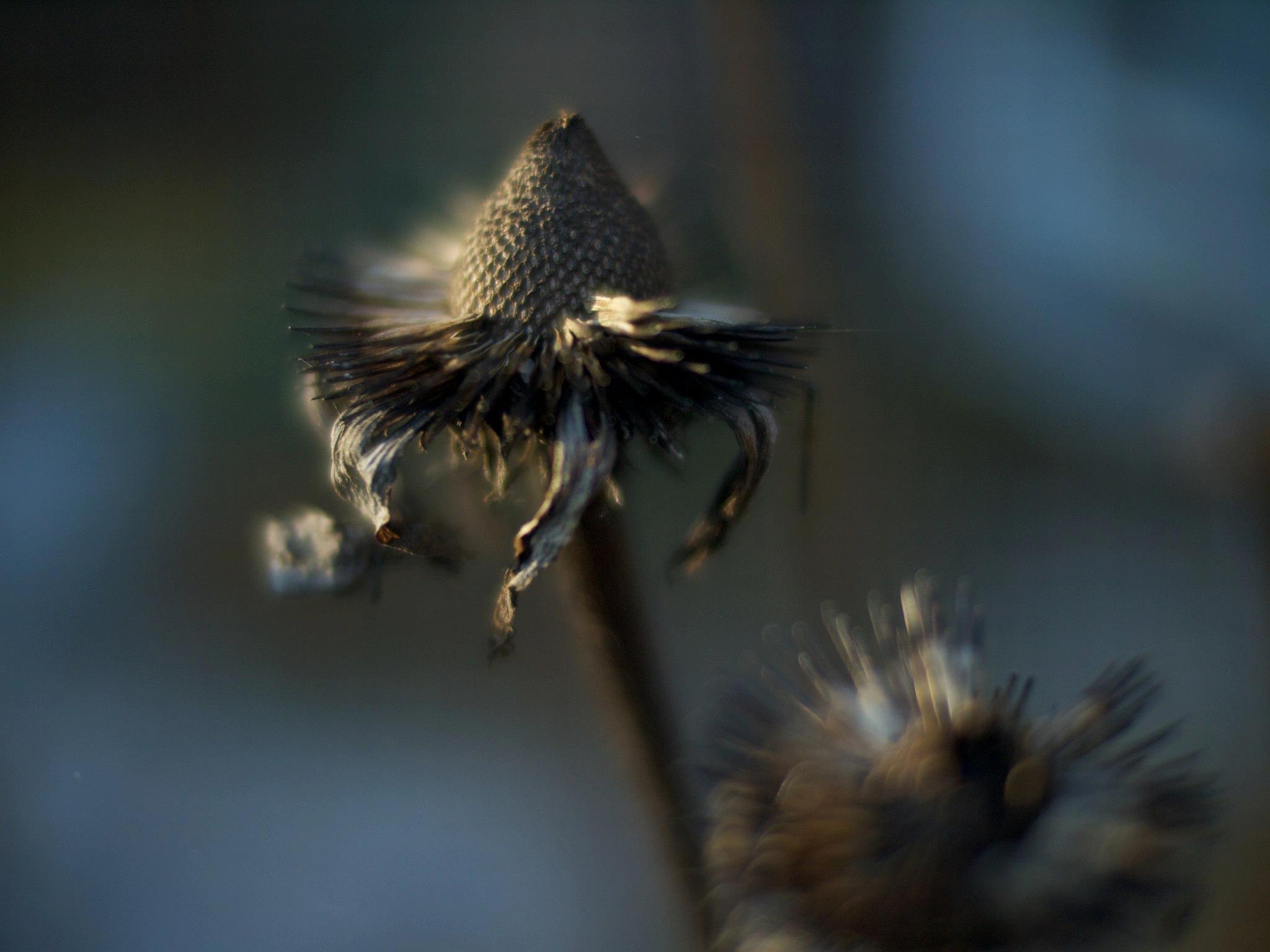What a week.
Like so many others, I’m devastated by the death of cultural lodestar, David Bowie. So much more than a pop icon, he sparked a generational spirit of transformation that inspired and dared us to experiment with a whole new sense of self and the possibilities of life.

He exerted a special power among outliers, artists, androgynes, and the demimonde. There was always a dark side to the soundtrack.
What does this have to do with a planting design blog? Well, perhaps more than I first realized.
In his final days, Bowie presented us with songs and videos that he planted at the end of life for the mystery to come. His prophetic video for the song Lazarus, amazingly created while suffering from cancer, makes his death the final performance.
Buttons are placed upon his bandaged eyes to close them to one world and open to another. In the husk of this earthly shell, we find the seeds of rebirth.

Art and death become one.
This same concept is at the heart of the New Perennial Movement – as Piet Oudolf recently reminded me, “The garden is a metaphor for life”.
In a word, transformation.
Zen and the Art of Functional Planting Management
In this very same week. Something profoundly fresh, new, and green.
Yesterday, I chanced upon a marvellous short film, already gone viral amongst biophiliacs and other horticultural creatures. It’s a window into the mind of ecological designer and plantswoman Claudia West – currently riding the zeitgeist with her recent book Planting in a Post-Wild World co-authored with Thomas Rainer.
As the film reveals, the story is intensely personal.
The video is the work of a new collective named Functional Planting: comprised of four partners with producer Corine Holtmaat and film director Mans van den Berg from the Netherlands joining ecological designer Claudia West and horticulture professional Carrie Wiles from the U.S.
This cross-cultural team is exploring the greater picture of how plants contribute to our planetary and human existence under the rubric of Solutions for a sustainable future. They are an initiative of Dutch-based AgriFood Support, and if this is a sign of things to come, I am ultra keen to follow their progress.
Transformation. It’s what plants and humans are all about. No wonder we love them so deeply.
Famous Last Words
I leave this to Mr. Bowie with his aching interpretation of the Jacques Brel classic. I am now almost beyond tears.
My death waits there among the flowers
Where the blackest shadows, blackest shadows cowers
Let’s pick lilacs for the passing time
David Bowie: My Death (Jacques Brel)

Wow…wiping tears from my eyes! You have touched on the heart of how all things are interconnected. Mr. Bowie has gifted us again with a beautiful example of how to die gracefully. And now Alan Rickman has joined him in the light. The earth is precious and artist sense this more profoundly than the average person, I think. I had not read the quote by Piet Oudolf but it is similar to something I wrote in a journal long ago. And now use this bit on my ‘about me’ page on our website, I have the book Planting in a Post-Wild World right here on my desk.
“I have been a gardener all my life. I remember being 8 years old and growing sunflowers and tomatoes from seeds. Sadly the little boy down the street picked all the tomatoes off the vine before they were ripe and beheaded the sunflower; and yes there were tears. That is the life of a gardener: celebration, awe, reverence and letting go”
“The garden is a microcosm of life. It has so much to teach us when we take the time to listen to its lessons.” LjL
Thank you so much for this blog, the picture of DB is perfect!
Such an emotional time. Thanks for the quote from PPWW – it’s the personal stories in that book that really make it leap off the page. That’s why I love the short film in the post.
Wonderful, Tony — indeed the garden encompasses the full cycle of life, death, and regeneration.
Tony, The proposition that ‘The garden is a metaphor for life’ dates at least from Genesis and probably earlier. The problem is that, as poets of all ages have illuminated, it is a metaphor for many more precise concepts; a ‘metaphor for life’ is so vague as to be an essentially empty claim. On the pre-contents page of my Essays on Gardening in a Cold Climate I quoted Jan Struther speaking as Mrs. Miniver: ‘The worst of gardening’, said Mrs. Miniver, ‘is that it’s so full of metaphors one hardly knows where to begin.’
Great photos as always. Brian
I hear Piet’s thick Dutch accent in my mind, which I guess changes how I think about his words. They ring deeper for me – I realize now a reader won’t necessarily have that connection.
“A metaphor for life”. Yes, it’s one of those universal truths, which for all its simplicity is no less true.
I think by life, he means transformation – to find the different beauty present in senescence and death. Things our culture normally hides away under veils, casket lids, and compost heaps.
Certainly, Bowie was always the crown prince of changes – right up to his final incarnation.
(Thanks for the question: it made me rethink.)
Where oh where did you find that beautiful image of Bowie on the pedestal? Lovely, lovely post. I’m sharing this so others can cry with me.
Ah! It’s a portrait of Bowie as statuary taken by Lord Snowdon (dug up by friend Carien van Boxtel). By all means please share – I’m far from finished crying either.